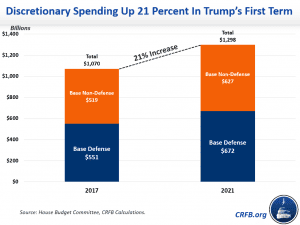A young person recently brought up a question he heard during an interest meeting about joining a local church.
“What is the church doing to diversify its membership?” another young man asked. “I look around our congregation and … it is pretty white!”
The pastor answered in perhaps the best way he could: “Our church doors are open to anyone who wants to attend. We are a church of peace and spreading the Gospel, and all who want to attend are welcome.”
“Freedom of opportunity,” “freedom of choice” and “diversity” can be congruent ideals but often are very different things in practice. The ideal world is where everyone can join any church; work at any business or live in any neighborhood they choose regardless of race or socio-economic status.
However, that doesn’t mean that everyone actually wants to attend, work or live in the same places, as say, you do. The essential freedom to pursue one’s own course of happiness underlies the very definition of being “American,” regardless of outcome.
In high school, I was invited by a close friend of mine, Ronnie Dowdy, to go to church with him. Ronnie was a huge football star at Durham Jordan High School and was heavily recruited to play at Notre Dame, Ohio State, Southern Cal and Penn State among about 100 other colleges, but he ultimately signed to play for the Tar Heels at Carolina.
Durham was at the forefront of the integration movement in 1968 which is why Ronnie and I were in the first fully integrated seventh grade class in the first place. At age 12, we really didn’t understand what was going on at the time; we thought we were just playing sports, horsing around and going to class with a lot of great people, white and black, whom we grew to respect, admire and love.
I went to his church and was overwhelmed by the energy and the spirit in the worship service. The hymns were sung with abandon and the outpouring of friendship and love at his church was real and genuine.
I asked Ronnie later if he wanted to go with me to my church, a Methodist church in Durham.
“Why would black people want to go to a white church?” Ronnie said with a hearty laugh. “The services are boring; the music isn’t very good and white people just don’t look like they are having any fun in church!” he went on to observe.
He had a good point. He and his family were making their own choice to not attend a white church as were the rest of their congregation.
There are reasons beyond simple appearances or headcounts as to why African American worshipers might not want to attend predominantly white church services that have nothing to do with race. That is why the issue of mandating “diversity” is such a difficult one. No elected official can “mandate” that every facet of everyday life in America has to perfect match the population percentages of each ethnicity in the community because each individual — white, black, latino — has the freedom to make their own choices each day.
If we could mandate perfect integration of the races, then the makeup of every business, church, government office and school in Wake County would adhere to these precise percentages: 72.40% White, 19.72% Black or African American, 5.41% Hispanic or Latino, 3.38% Asian, 2.48% from other races, 1.64% from two or more races, 0.34% Native American, and 0.03% Pacific Islander.
How impossible would that be to implement?
The beauty of America is its ability to allow everyone to have their own freedom of choice regarding which house of worship they attend or what line of work they choose to do. It would be a travesty to allow any elected official to use the coercive power of government to force people to fit into predetermined slots based on race as if they are just different colored M&M’s and not human beings.
Do You Want Better People to Run for Public Office?
Support the Institute for the Public Trust Today
Visit The Institute for the Public Trust to contribute today
Support the Institute for the Public Trust Today
Visit The Institute for the Public Trust to contribute today




